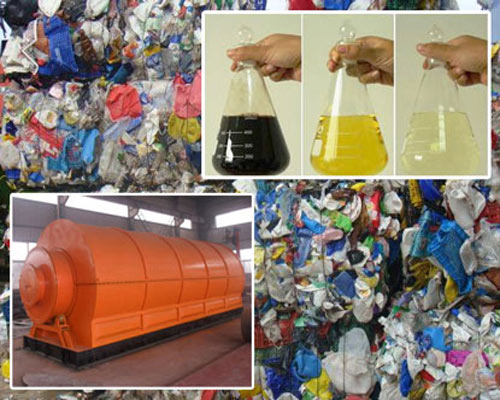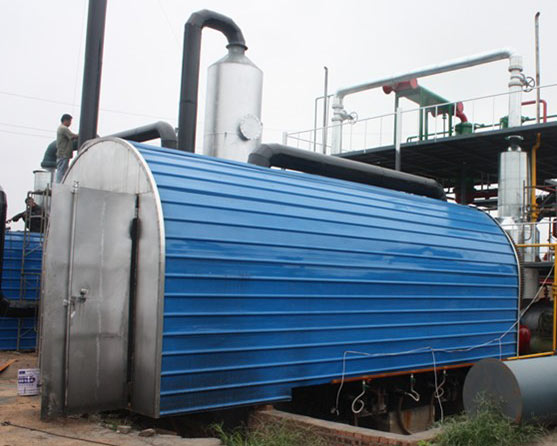Plastic disposal, excessive use of fossil fuels has indeed caused a lot of environmental concern all over the world. Plastics have hydrocarbons that contain both hydrogen and carbon. The plastic molecules have a longer carbon chain than those found in the petrol and diesel fuels. Thus it is possible to convert plastics into fuel by breaking the chain. Accordingly, many people find a good pyrolysis reactor design to deal with plastic and tyre waste.
Luckily, this plant can be used to convert plastic and tyre waste into diesels and petrol fuels. The technique uses catalytic cracking process to treat unwashed plastic waste and converts them into useful hydrocarbons liquid including diesel fuel and crude oil. Commercial plants convert pyrolysis waste plastics into fuels thus reducing environmental pollution.

The cracking process is effective at a temperature of 450 ℃. When plastics and tyre waste are exposed to such high temperatures, they are broken down into light hydrocarbons. When other factors such as catalysts, reactor and pressure are present the plastics can then be easily converted into fuel oil. Get more information of plastic to oil machine for sale. See some videos on this page https://bestonmachinery.com/pyrolysis-plant/videos/.
The pyrolysis process consists of the following major steps:
1)Initiation;
2)Propagation;
3)Termination.
Initiation is the first step where the larger polymer molecules are cracked into free radicals. During the propagation stage, the free radical and molecule species are further cracked into even smaller molecules considered stable and which can then be moved to the termination stage where they are converted into fuel.
Types of Cracking Polymers
1)Random cracking;
2)Chain strip cracking;
3)End chain cracking.
Random cracking is the main type of cracking that reduces the polymers into molecules. At this stage, the molecular backbone is cracked, making it easier to move the molecules to the random cracking stage. The cracking process continues through the chain strip cracking and proceeds to the end chain cracking where they are converted into fuel. Related recommended: plastic recycling plant.
The cracking process is dependent on the amount of kinetic energy available, the more the energy the more the cracking. The products of the pyrolysis process include n-alkanes, dialkanes, and 1 alkanes.
After the first cracking, the molecules proceed to the second cracking where the heavy hydrocarbons are converted into light liquid or gas products. The second cracking process can be controlled buy adjusting the primary product efflux rate.

The pyrolysis plant has been investigated and it has been established that there is always some effect of contamination in the product. The interaction that takes place at each stage results into non-condensable gasses. Fortunately, it has been established that the effect on the final product is negligible. Also, it has been established that the paper labels found on the plastics result in higher residue in the final product. You shoud find reliable waste to energy plant manufacturers to get this machine, like Beston (Henan) Machinery Co. ltd.. However, the residue has an insignificant effect on the final product. It was found that:
1)The amount of non-condensable gases is considerably high.
2)The condensed products have a lower proportion of unsaturated hydrocarbons.
The pyrolysis waste plastics tyre into fuels process uses 1.328MJ/kg to convert the PE into fuel which is less than 3 % of the caloic vale of the final product. This means that the pyrolysis technology has a higher energy profit of about 42.3 MJ/kg. The process is also environmentally friendly and the final oil product is of high quality. In fact it is very close to any petroleum product derived from liquid fuel.